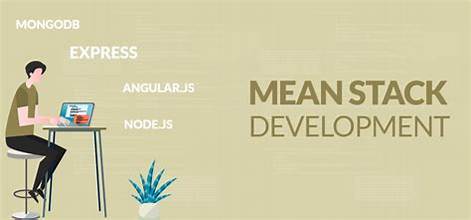Course Overview
Selenium WebDriver is a powerful web framework that allows you to execute cross-browser tests. By learning this tool, you can create robust, browser-based regression automation suites and tests, all while scaling and distributing scripts across many different environments. This is a recipe course, meaning you can directly go to the part that interests you. For example, if you are testing a multiple select list and don’t know how, you can look it up in the course roadmap and proceed with that lesson. With over 170 recipes for web application testing, you’ll have the opportunity to learn and practice both beginning and advanced techniques with Selenium WebDriver. By the time you complete this course, you will have a great new skill, and you’ll save tons of time when it comes to automating real user interactions in Firefox, Safari, Edge, Chrome, Internet Explorer and more!
Course Contents
- Getting Started
- What is this Course About?
- Introduction to Selenium WebDriver
- Mocha: A JavaScript-Based Test Framework
- Selenium with JavaScript Binding
- Running Your First WebDriver Recipe
- Quiz Yourself on Selenium Concepts
2. Working with Locators
- Locators
- Locating Web Elements
- Advanced Techniques
- Quiz Yourself on Locators
3. Working with Hyperlinks
- Hyperlinks
- Clicking a Link By Text, ID, and XPath
- Clicking the Nth Link and Link Verifications
- Getting Link Attributes and Tabs Switching
- Quiz Yourself on Hyperlinks
4. Working with Buttons
- Buttons
- Clicking a Button By ID, Name, Image, and Javascript
- Form Submissions
- Button Assertions
- Quiz Yourself on Buttons
5. Working with Text Fields and Areas
- Text Fields and Text Areas
- Entering Text Into Text Fields and Text Areas
- Clearing a Text Field and Focusing On a Control
- Handling Read-Only, Disabled or Hidden Fields
- Quiz Yourself on Text Field and Text Areas
6. Working with Radio Buttons and Radio Groups
- Radio Buttons
- Working with Radio Buttons
- Working with Radio Groups
- Working with Customized Radio Buttons
- Quiz yourself on Radio buttons
7. Working with Checkboxes
- Checkboxes
- Checking a Box by Name and ID
- Unchecking and Asserting a Checkbox
- Handling a Customized Checkbox
- Quiz Yourself on Checkboxes
8. Working with Select Lists
- Select Lists
- Selecting a Single Option From a Select List
- Selecting Multiple Options From a Select List
- Clearing an Option From a Select List
- Select List Assertions
- Quiz Yourself on Select Lists
9. Page Navigations and Browser Management
- Page Navigation with Selenium
- Browser Management with Selenium
- Advanced Techniques
- Quiz Yourself on Page Navigation and Browser Management
10. Assertions
- Page Assertions
- Text Assertions
- Table Assertions
- Miscellaneous Assertions
- Quiz Yourself on Assertions
11. Working with Frames
- Framei
- Frame
- Quiz Yourself on Frame
12. Working with AJAX
- AJAX
- Wait Within a Time Frame
- Wait Until Timeout
- Wait Until AJAX Call Completes
- Quiz Yourself on AJAX
13. Working with File Uploads and Pop-Up Dialogs
- Uploading a File
- Handling JavaScript Pop-Up Dialogs
- Handling Modal Style Dialogs
- Quiz Yourself on Dialogs
14. Debugging Test Scripts
- Debugging by Printing Texts
- Debugging with Mocha
- Miscellaneous Techniques
- Quiz Yourself on Debugging Test Scripts
15. Testing Data
- Testing Numeric Data
- Testing Alphabetic Data
- Testing Alphanumeric Data
- Testing Miscellaneous Data
- Quiz Yourself on Testing Data
16. Working with Browser Profiles and Capabilities
- Browser Profiles and Capabilities
- Running Browsers Headlessly
- Verifying File Downloads
- Bypassing Authentications
- Quiz Yourself on Browser Profiles and Capabilities
17. Working with Advanced User Interactions
- User Interactions
- Keyboard Interactions
- Mouse Interactions
- Quiz Yourself on Advanced User Interactions.
18. Working with HTML5 and Dynamic Websites
- Working with HTML5 Email and Time Field
- Working with JavaScript Events
- Working with Select2
- Working with Frameworks
- Working with HTML5 Geolocation
- Working with HTML Canvas
- Quiz Yourself on HTML5 & Dynamic Web Concepts
19. “What You See Is What You Get” HTML Editors
Working with ‘WYSIWYG’ Editors
20. Leverage Programming
- Why Programming?
- Ignorable Test Errors and External File Reading
- Data-Driven Tests
- Working with Dynamically Generated IDs, Special Keys, and Unicode
- Dynamic Data Extraction
21. Optimizations
- Optimization Techniques: Part 1
- Optimization Techniques: Part 2
22. Gotchas
- Common Test Execution Failures
- Tag Error and Element Not Clickable
23. Appendix A: Miscellaneous
- Working with Material Design Web App
- Working with Selenium Server
- Working with Selenium Grid
24. Appendix B: Installations
- NodeJS
- Selenium and Mocha
- BrowsersIDEs
25. Wrapping Things Up
Afterword
How You’ll Learn
Hands-on Coding Environments
You don’t get better at swimming by watching others. Coding is no different. Practice as you learn with live code environments inside your browser.
2x Faster Than Videos
Videos are holding you back. The average video tutorial is spoken at 150 words per minute, while you can read at 250. That‘s why our courses are text-based.
No Set-up Required
Start learning immediately instead of fiddling with SDKs and IDEs. It‘s all on the cloud.
Progress You Can Show
Built in assessments let you test your skills. Completion certificates let you show them off.


